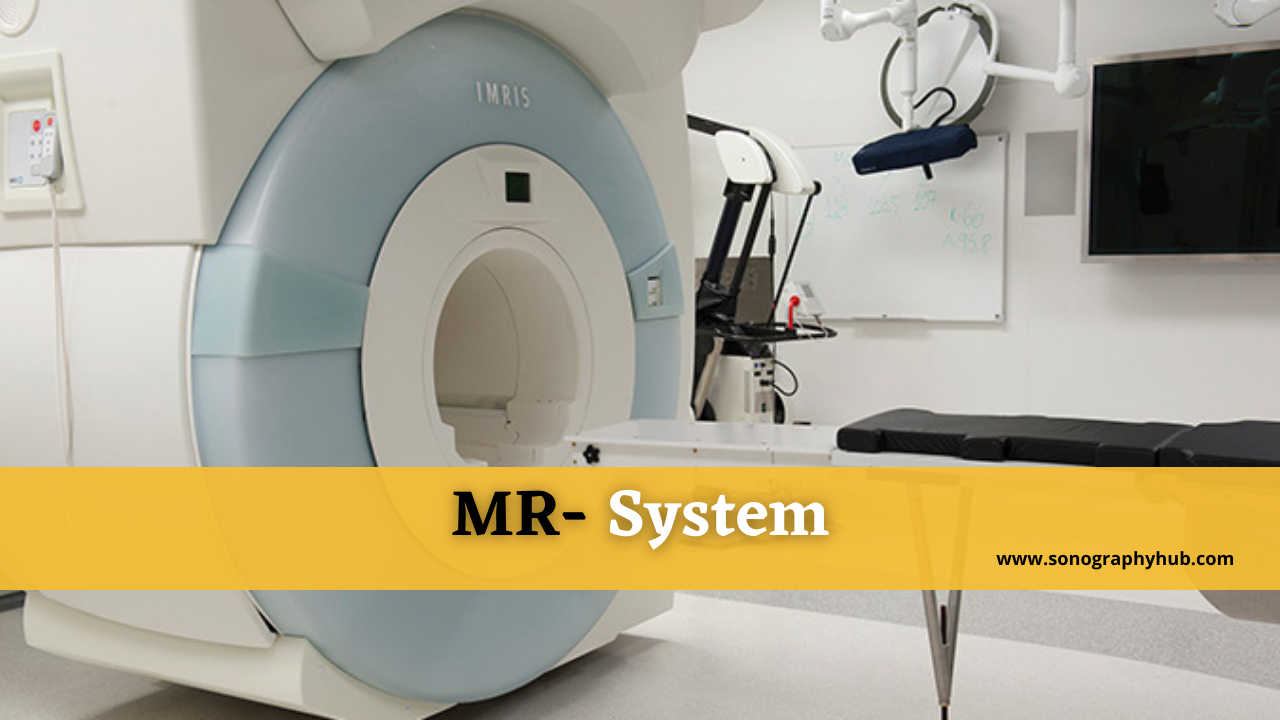Equipment required to acquire are discussed basic four components that make MR
system.
- The magnetic to produce an external magnetic field
- The gradient to localize the signal
- Transmitter and receiver coils for RF Pulses
- Computer system.
Magnetism is a fundamental property of matter. All substances possess some form of
magnetism. The degree of magnetism depends upon the magnetic susceptibility Of the atoms
that make the substance. Magnetic susceptibility Is the ability of the substance To get
affected by external magnetic field and is related to electron Configuration of the atom.
depending on the magnetic susceptibility, for example, substances' response to a magnetic
field, substances can be paramagnetic, diamagnetic, or ferromagnetic.
Paramagnetic
Paramagnetic substances have unpaired Electrons with the atom. This results in a small
magnetic field around them called a magnetic moment. when an external magnetic field is
applied, these moments add together and align in the direction of an external magnetic
field. Thus paramagnetic substances affect the External magnetic field in a positive way by
attraction towards the field resulting in a locaI increase in the Magnetic field. Examples of
paramagnetic substances are gadolinium, Oxygen, and melanin.
Diamagnetism
Diamagnetic Substances react in an opposite way when the external magnetic field is applied.
They are Repelled by the magnetic field. Thus diamagnetic substances have negative
magnetic susceptibility and show a slight decrease in magnetic field strength within the
sample. Examples of diamagnetic substances include Bismuth, Mercury, copper, and
carbon.
Ferromagnetism
Ferromagnetic substances get strongly attracted towards the externally applied magnetic
field. Moreover, they retain their magnetism even when the external magnetic field is
removed. Such substances are used to make permanent magnets. The magnetic field in
permanent Magnet can be hundred or even thousands of times greater than the applied journal
magnetic field. Examples of ferromagnetic substances are iron, cobalt, and nickel.
Magnetic field strength
The magnetic field is Expressed by notation ‘B’, the primary field as B0, and the secondary field
as B1. The units of magnetic field strength are Gauss and Tesla. Tesla was the father of
alternating current and Gauss was a German mathematician.
1Tesla=10kg=10,000Gauss
Gauss is a measure of low magnetic field strength. Earth’s Magnetic field strength is
approximately 0.6G.
MR systems used for clinical purposes have strength from 0.2 to 3 Tesla. Field strengths
higher than 3T are used for research purposes.SNR and resolution Increase with the field
strength. Advanced MR applications like spectroscopy, functional MRI, cardiac MR are
possible only on higher field strengths like 1.5T and above.
Magnets
Three Types of magnets are in use for clinical MRI machines.
- Permanent magnet
- Electromagnet
- Superconducting magnet.
Permanent magnet
A permanent magnet is made up of ferromagnetic substances. Usually, MR magnets are made
up of alnico, which is an alloy of aluminum, nickel, and cobalt. permanent magnets do not
require a power supply and are of low cost. The Magnetic field of a permanent magnet is directed
vertically. Open MRI is possible with a permanent magnet, Which is useful in claustrophobic
patients. Magnetic field strength achievable with permanent magnet is low in the range,
typically 0.2 to 0.5 Tesla. Hence they have low SNR and low resolution. Higher applications
like spectroscopy cannot be performed on them.
Electromagnets
These are based on the principle of electromagnetism. The law of electromagnetism states
that moving electric induces a magnetic field around it. If a current is passed a wire, a
magnetic field is created around that wire. The length of the resultant magnetic field is
Proportional to the amount of current moving through the wire. When a wire is looped like a
coil and current is passed through it, the magnetic field generated is directed along the long
axis of the coil. Magnets made of such coils are called solenoid or resistive
electromagnets. All all the wires at normal temperature tend to resist the passage of
current. As the resistance increases, current decreases with resultant reduction in field
strength.
To get a homogeneous field current it must be steady and stable. The Heat
generated during this process is removed by running cooled water through tubes passing
over the end of the coil. The field strength obtained with electromagnets is limited To 0.2 to
0.3 Tesla because of continuous power and cooling requirements. Even Though capital cost
is low operational Cost is high for electromagnets because of the enormous power
requirement. However, electromagnets are easy to install and can readily be turned on and
off inexpensively.


Post a Comment